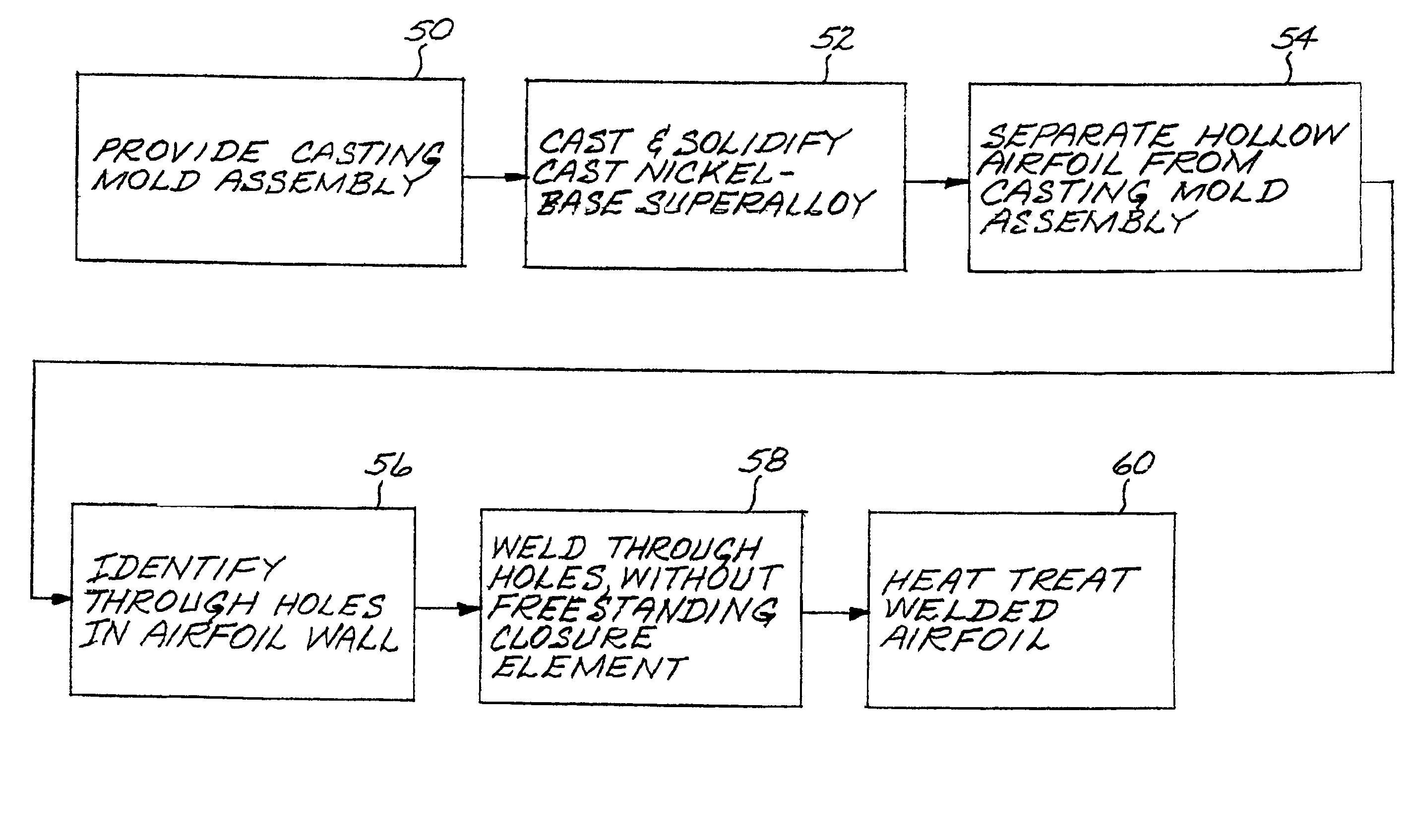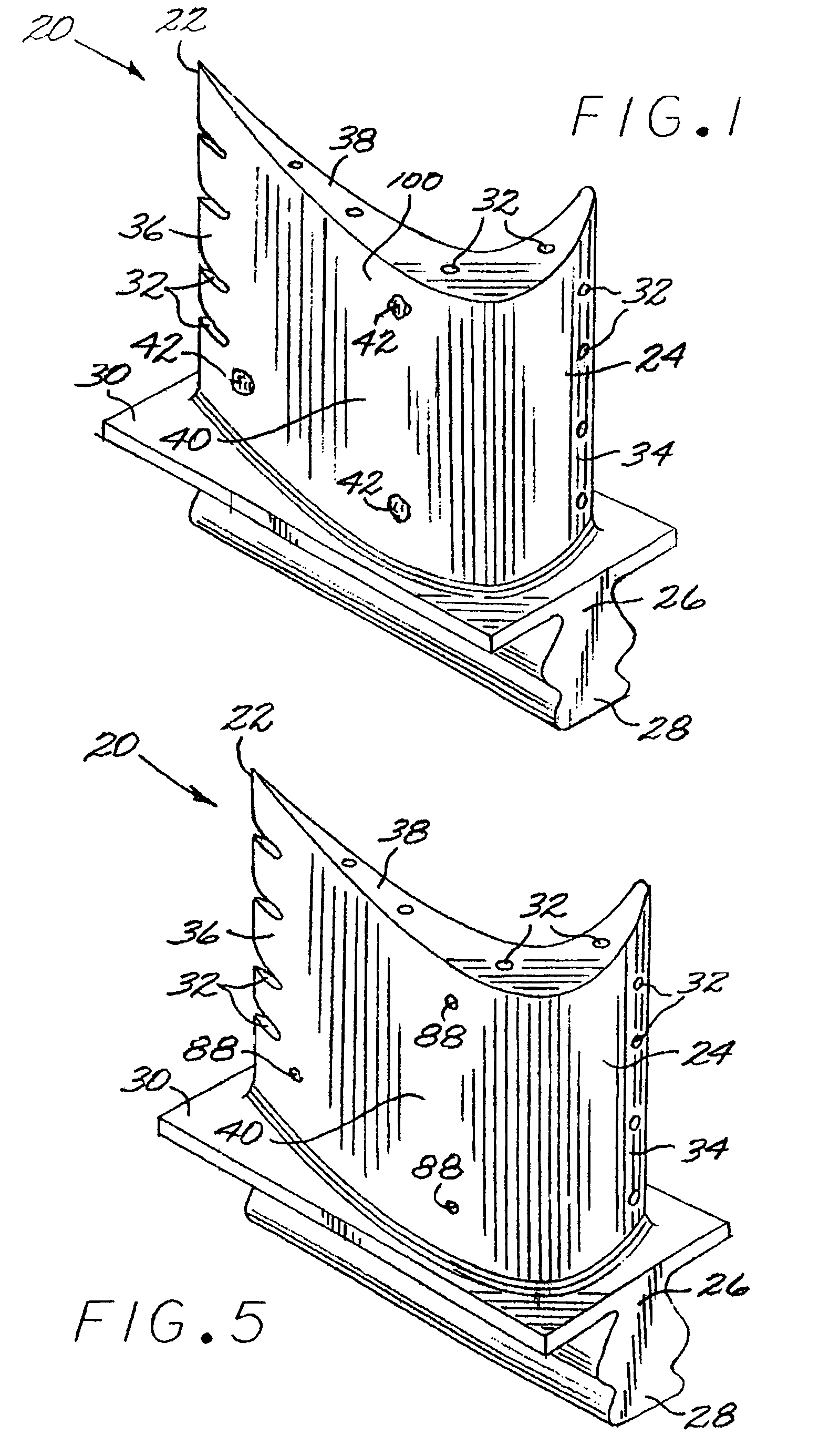Weld closure of through-holes in a nickel-base superalloy hollow airfoil
a superalloy and airfoil technology, applied in the field of aircraft gas turbine (jet) engines, can solve the problems of hole therethrough, reduce the cooling efficiency and overall performance of the hollow component, and the temperature of combustion gas cannot be arbitrarily high, so as to achieve good adhesion, reduce mechanical and physical properties, and practicability. good
- Summary
- Abstract
- Description
- Claims
- Application Information
AI Technical Summary
Benefits of technology
Problems solved by technology
Method used
Image
Examples
Embodiment Construction
[0025]FIG. 1 depicts a cast hollow component 20, in this case a hollow gas turbine blade 22. The gas turbine blade 22 has a hollow airfoil 24 against which a flow of hot combustion gas impinges during service operation, a downwardly extending shank 26, and an attachment in the form of a dovetail 28, which attaches the gas turbine blade 22 to a gas turbine disk (not shown) of the gas turbine engine. A platform 30 extends transversely outwardly at a location between the airfoil 24, and the shank 26 and dovetail 28. The gas turbine blade 22 is hollow, so that in service cooling air may flow from an interior of the dovetail 28, which communicates with a cooling-air manifold, through an interior of the shank 26, and through an interior of the airfoil 24. The cooling air leaves the interior of the gas turbine blade 22 through carefully positioned cooling openings 32 in the leading edge 34, the trailing edge 36, and the blade tip 38, and possibly on the lateral surfaces of the airfoil 24. ...
PUM
| Property | Measurement | Unit |
|---|---|---|
| solidus temperature | aaaaa | aaaaa |
| solidus temperature | aaaaa | aaaaa |
| size | aaaaa | aaaaa |
Abstract
Description
Claims
Application Information
 Login to View More
Login to View More - R&D
- Intellectual Property
- Life Sciences
- Materials
- Tech Scout
- Unparalleled Data Quality
- Higher Quality Content
- 60% Fewer Hallucinations
Browse by: Latest US Patents, China's latest patents, Technical Efficacy Thesaurus, Application Domain, Technology Topic, Popular Technical Reports.
© 2025 PatSnap. All rights reserved.Legal|Privacy policy|Modern Slavery Act Transparency Statement|Sitemap|About US| Contact US: help@patsnap.com



